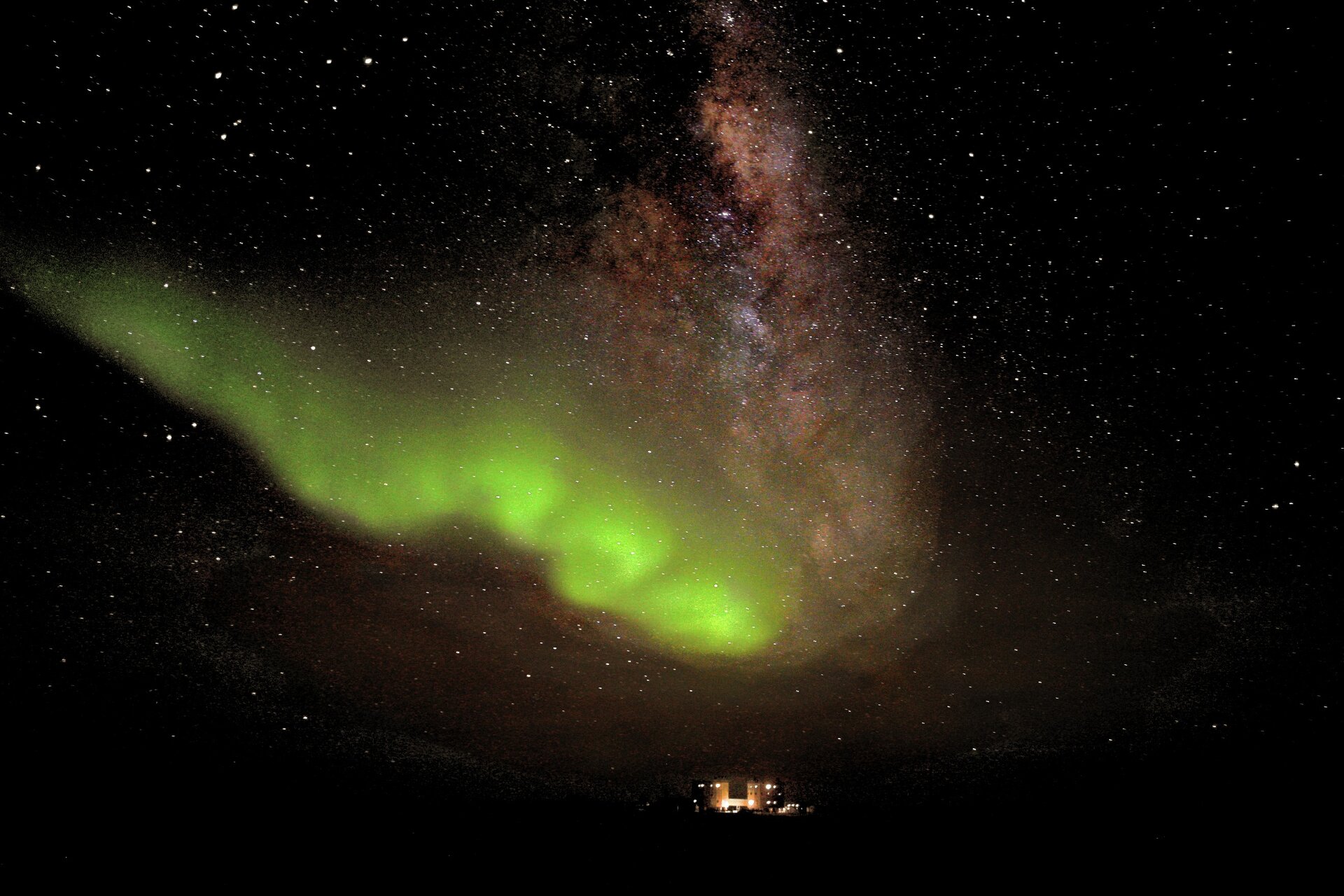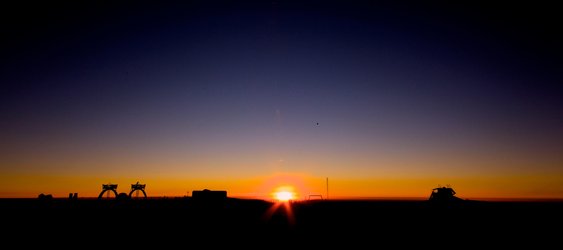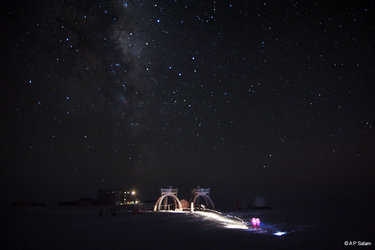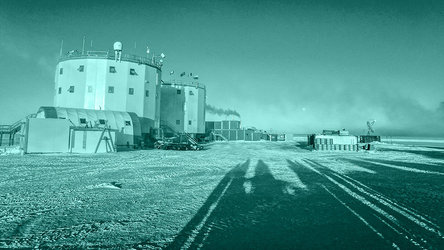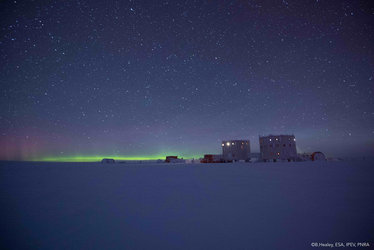Aurora Australis over Concordia station 18 July
A stunning image showing Aurora Australis – the Southern Lights – glowing over Concordia station in the Antarctic, one of the remotest places on Earth, on 18 July 2012. It was taken by ESA-sponsored scientist Alexander Kumar and his colleague Erick Bondoux from about 1 km from the station, located in the Antarctic at 75°S latitude.
The French–Italian Concordia station's programme of research includes glaciology, human biology and the atmosphere. ESA uses the base to prepare for future long-duration missions beyond Earth.
During the winter, Concordia is under almost total darkness, with an average temperature of –51°C and a record low of –85°C. It is an ideal place to study the effects on small, multicultural teams isolated for long periods in an extreme, hostile environment.
Auroras occur frequently over both the North and South polar regions, but are often difficult to see from populated areas. During periods of increased solar activity, the lights sometimes extend to populated latitudes.
This year has seen unusually high solar activity; most recently, on 14 July, Northern Lights could be seen as far south as Duluth, Minnesota, USA.
Solar activity remains unusually high
On 17 July, the ESA/NASA SOHO mission captured an image of a spectacular solar flare, which unfolded over a period of several hours.
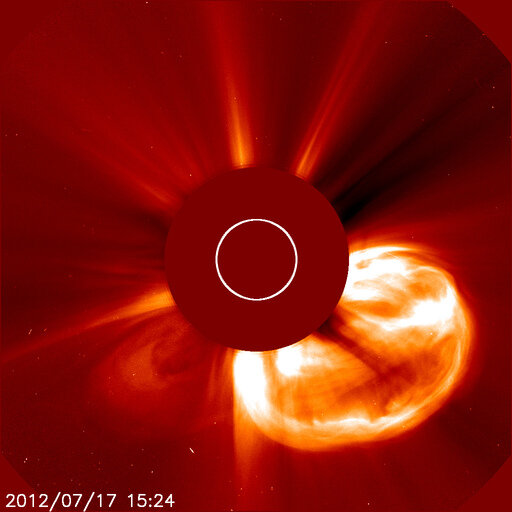
It was an M1-class flare, and produced a coronal mass ejection that will reach the region of Venus on 19 July and may deliver a glancing blow to Earth on 20 July.
The effects at Earth are expected to be minor, but could include some effects on satellites in orbit or interference in high-frequency radio communications.
And still more...

Yet another flare occurred on 19 July, when solar active region NOAA AR 1520 produced an M7.7-class flare around 05:58 GMT.
The flare generated a coronal mass ejection that is directed to the west and will most likely not reach Earth.
However, a rapid increase in proton particles has been detected, and these have some effects on satellites.
Tracking space weather
“It is important to monitor, track and assess space weather events such as solar flares and especially the solar energetic particle events and coronal mass ejections sometimes associated with them,” says Juha-Pekka Luntama, manager of the space weather segment in ESA’s Space Situational Awareness programme office.
“Such events are capable of affecting space-based telecommunications, broadcasting, meteorological observations and navigation through to power distribution and terrestrial communications, especially at northern latitudes.”


